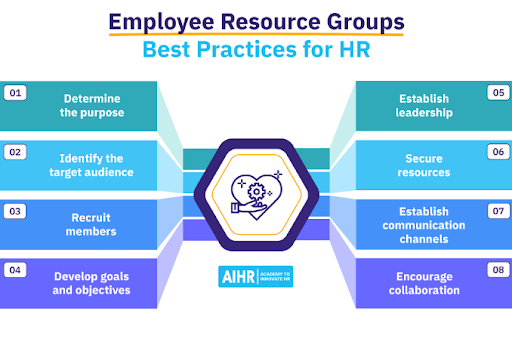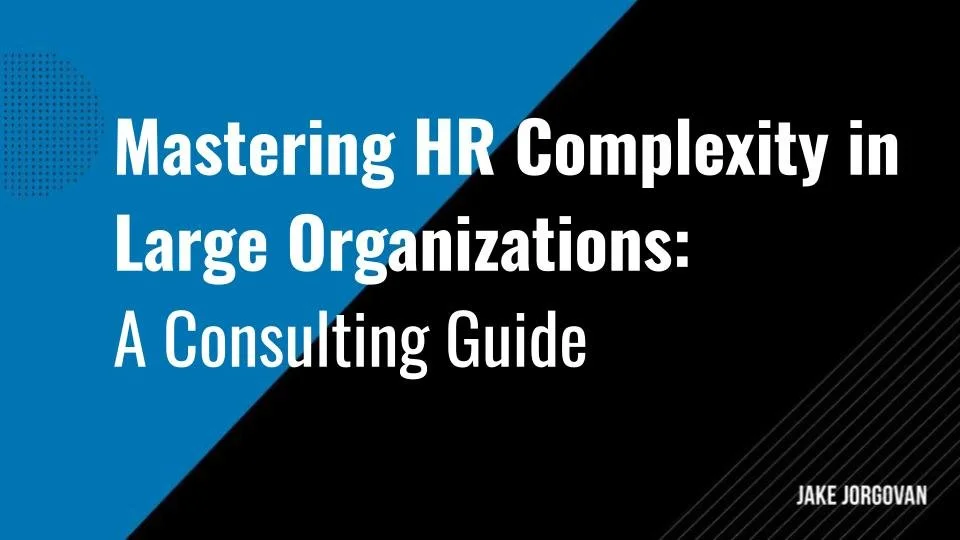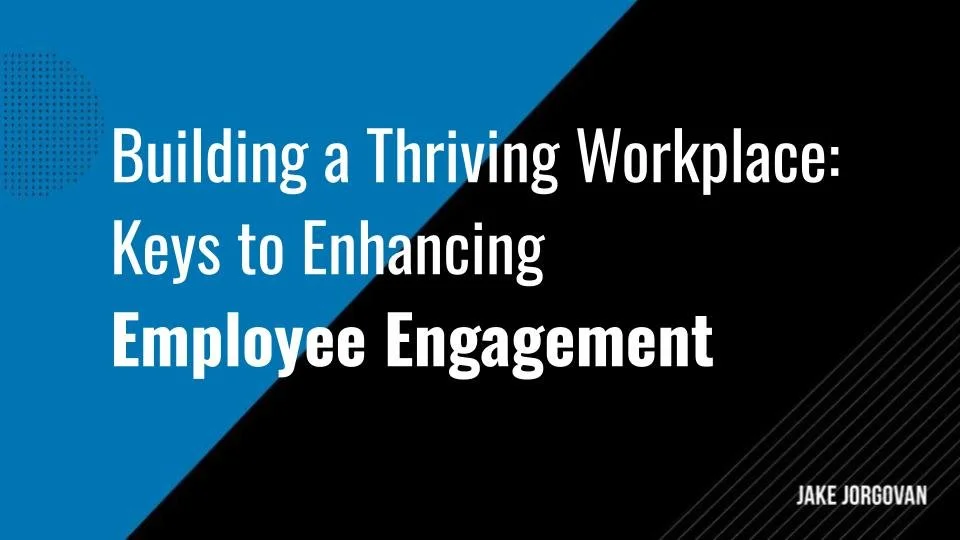5 Effective Strategies for Promoting Inclusion In the Workplace
Inclusion in the workplace is essential for a thriving business.
That’s because diverse teams drive innovation and performance.
However, supporting inclusion requires deliberate actions.
This article explores 5 strategies for promoting inclusion in the workplace. Implementing them will enhance your workplace culture and improve employee satisfaction.
Let’s dive into these practical and impactful strategies.
5 Strategies for Promoting Inclusion in the Workplace
1) Implement Diversity Training Programs
Diversity training programs are a powerful tool for developing understanding and respect among employees. Here’s a step-by-step approach to implementing these programs effectively:
Assess Your Needs: Identify specific areas where your workplace lacks inclusivity. You can conduct surveys or focus groups to gather insights from employees about their experiences and challenges related to diversity.
Set Clear Objectives: Define what you aim to achieve with the training. This could be reducing unconscious bias, improving cultural competency, or creating a more inclusive environment. Having clear goals will guide your efforts.
Choose the Right Format: Decide whether the training will be in-person, virtual, or a blend of both. Consider workshops, e-learning modules, or interactive sessions that can engage employees effectively.
Develop Comprehensive Content: Create or source materials that cover a range of topics, such as unconscious bias, cultural awareness, and inclusive language. Ensure the content is relevant to your industry and the specific issues identified in your needs assessment.
Engage Expert Facilitators: Hire experienced trainers who specialize in diversity and inclusion. Their expertise will help address complex topics and provide real-world examples that resonate with your team.
Implement Training Sessions: Roll out the training in manageable segments. Ensure that all employees, including leadership, participate. Schedule sessions at convenient times to maximize attendance.
Evaluate and Iterate: Gather feedback to assess its effectiveness after the training. Use surveys and follow-up discussions to understand what worked and what didn’t. Continuously refine the program based on this feedback.
Insider tip:
We recommend integrating diversity training into your onboarding process. This will allow new hires to understand your commitment to inclusion from day one and set the tone for an inclusive culture.
2) Establish Employee Resource Groups
Employee resource groups (ERGs) can effectively provide support, build community, and enhance professional growth. Here's how you can establish ERGs in your workplace:
Identify Interest Areas: Start by understanding your employees' demographics and interests. You can conduct surveys or hold meetings to gauge interest in various ERGs, such as groups focused on gender, ethnicity, LGBTQ+ issues, or shared interests.
Secure Leadership Support: Gain the backing of senior management. Explain the benefits of ERGs in promoting inclusion, enhancing employee engagement, and driving innovation. Their support will be crucial for resource allocation and legitimacy.
Define Clear Objectives: Establish the goals and mission of each ERG. Determine what each group aims to achieve, such as networking, professional development, community outreach, or advocacy within the company.
Provide Resources: Allocate necessary resources for ERGs to function effectively. This can include meeting spaces, budgets for events and activities, and access to company communication channels for promoting their initiatives.
Encourage Participation: Promote the ERGs within the company to ensure broad participation. Use newsletters, intranet, and company meetings to inform employees about the existence and purpose of these groups.
Facilitate Regular Meetings: Ensure that ERGs meet regularly. Provide a structured meeting format to keep them productive and focused on their goals. Encourage sharing of progress and challenges to build a sense of accountability and achievement.
Measure Impact: Track the effectiveness of ERGs by collecting feedback from participants and assessing their impact on employee satisfaction and inclusion metrics. Use this data to refine and improve the groups over time.
Insider tip:
We suggest periodically rotating ERG leadership roles. This practice ensures fresh perspectives, prevents burnout, and promotes broader engagement across your organization's different levels.
3) Cultivate Inclusive Leadership Practices
Emphasizing inclusive leadership practices allows all employees to feel valued and respected. Here's how you can develop an environment of inclusive leadership in your company:
Educating the Leaders: Start by educating the leaders about why diversity and inclusivity are so important. It is important to sensitize leaders to unconscious biases, understand cultural competency, and how these practices will impact teams' performance.
Setting Clear Expectations: Define what inclusive leadership means for your organization. Describe what inclusive leadership looks like in behaviors and actions, particularly in terms of active listening, the value of different viewpoints, and in creating open, collegial environments.
Demonstrating Inclusive Behaviors: Encourage your leaders to lead by example. This means showing respect, empathy, and fairness every day in each interaction with all your employees. Leaders should also champion their commitment to diversity initiatives by involving themselves in inclusion activities.
Tools and Resources: Provide leaders with some practical tools to support inclusive practices. This might include inclusive meeting protocols, checklists for equitable decision-making, and information on how to manage diverse teams effectively.
Ensure Accountability: Ensure organizational accountability for leaders' actions. To do that, build inclusion metrics into performance reviews. Also, set goals related to diversity, review how things are going, and provide feedback for continuous improvement.
Open Communication: Establish open communications so leaders may receive and act on feedback to be more inclusive. Leaders should feel free to discuss diversity and move swiftly on any issues or concerns.
Reward and Recognition: Celebrate such a cohort in an all-company communication and consider incentives that will promote an ongoing commitment to this practice.
Insider Tip:
We would like to suggest that you also implement a reverse mentoring program. Pair senior leaders with junior employees from diverse backgrounds. This helps leaders get firsthand insights into different perspectives, enhancing their understanding and commitment to inclusive practices.
4) Promote Open Communication Channels
Creating an inclusive workplace relies heavily on open communication. Clear and transparent channels enable employees to voice concerns, share ideas, and contribute to a collaborative environment. Here’s how you can establish effective communication channels in your organization:
Assess Current Channels: Evaluate your existing communication methods. Gather feedback from employees about their experiences and preferences to identify gaps and areas for improvement.
Establish Multiple Platforms: Set up various communication platforms to cater to different needs. Use emails, intranet, chat applications, and face-to-face meetings to ensure all employees can access information and participate in discussions.
Promote Accessibility: Ensure all communication tools are accessible to everyone, including those with disabilities. This might involve providing assistive technologies or adapting formats to meet diverse needs.
Encourage Open Dialogue: Create a culture where employees feel safe to express their opinions. Encourage managers to hold regular one-on-one and team meetings where open dialogue is promoted and valued.
Provide Training: Train employees on effective communication skills. This includes active listening, giving and receiving feedback, and using inclusive language. Make sure leaders model these behaviors.
Implement Feedback Mechanisms: Set up systems for anonymous feedback to ensure employees can voice concerns without fear of retaliation. Regularly review and act on this feedback to show that employee input is valued and impactful.
Regular Updates: Keep employees informed with regular updates on company news, initiatives, and changes. Transparency builds trust and ensures everyone feels included in the organizational journey.
Insider tip:
We recommend setting up a cross-functional communication task force. This team, drawn from different departments, can continuously monitor and improve communication effectiveness. It ensures that diverse perspectives are considered and communication remains a top priority in creating an inclusive workplace.
5) Develop Equitable Hiring and Promotion Processes
This approach ensures that opportunities are accessible to all employees, regardless of their background. Here’s how you can create these processes:
Conduct a Bias Audit: Start by reviewing your current hiring and promotion practices. Identify areas where bias may exist, such as job descriptions, interview questions, and evaluation criteria. Use data to highlight disparities.
Standardize Procedures: Implement standardized procedures for hiring and promotion. Develop clear guidelines and criteria for evaluating candidates. Ensure that all decisions are based on objective, measurable factors rather than subjective opinions.
Use Diverse Panels: Assemble diverse hiring and promotion panels. Include members from various backgrounds to provide different perspectives and reduce individual biases. This diversity helps ensure a fair assessment of all candidates.
Implement Blind Recruitment: Remove identifying information from applications during the initial review stage. This can include names, addresses, and other demographic details that might inadvertently influence decisions.
Provide Training: Train hiring managers and promotion committees on unconscious bias and equitable practices. Equip them with the skills needed to recognize and mitigate bias throughout the process.
Monitor and Adjust: Review the outcomes of your hiring and promotion processes regularly. Track diversity metrics and assess whether the changes are leading to more equitable results. Adjust your strategies based on this data to ensure continuous improvement.
Build a Transparent Culture: Communicate openly about your commitment to equitable hiring and promotion. Ensure that employees understand the criteria and processes, and encourage feedback to identify further areas for improvement.
Insider Tip:
We recommend leveraging technology, such as AI-driven tools, to assist in unbiased candidate screening. These tools can help identify the best candidates based on skills and qualifications. This reduces the risk of human bias in the initial stages.
Create a More Inclusive Workplace Starting Today
Promoting inclusion in the workplace requires strategic actions. One way to do this is to Implement diversity training programs to build awareness and establish employee resource groups to enhance your community.
It's also important to promote inclusive leadership to ensure everyone feels valued. Create open communication channels to enable dialogue. Additionally, you can develop equitable hiring and promotion processes to provide fair opportunities for all.
Each strategy strengthens your organization’s commitment to diversity and inclusion.
So, follow the step-by-step plans we discussed above to enhance your workplace culture and drive innovation and employee satisfaction.



































